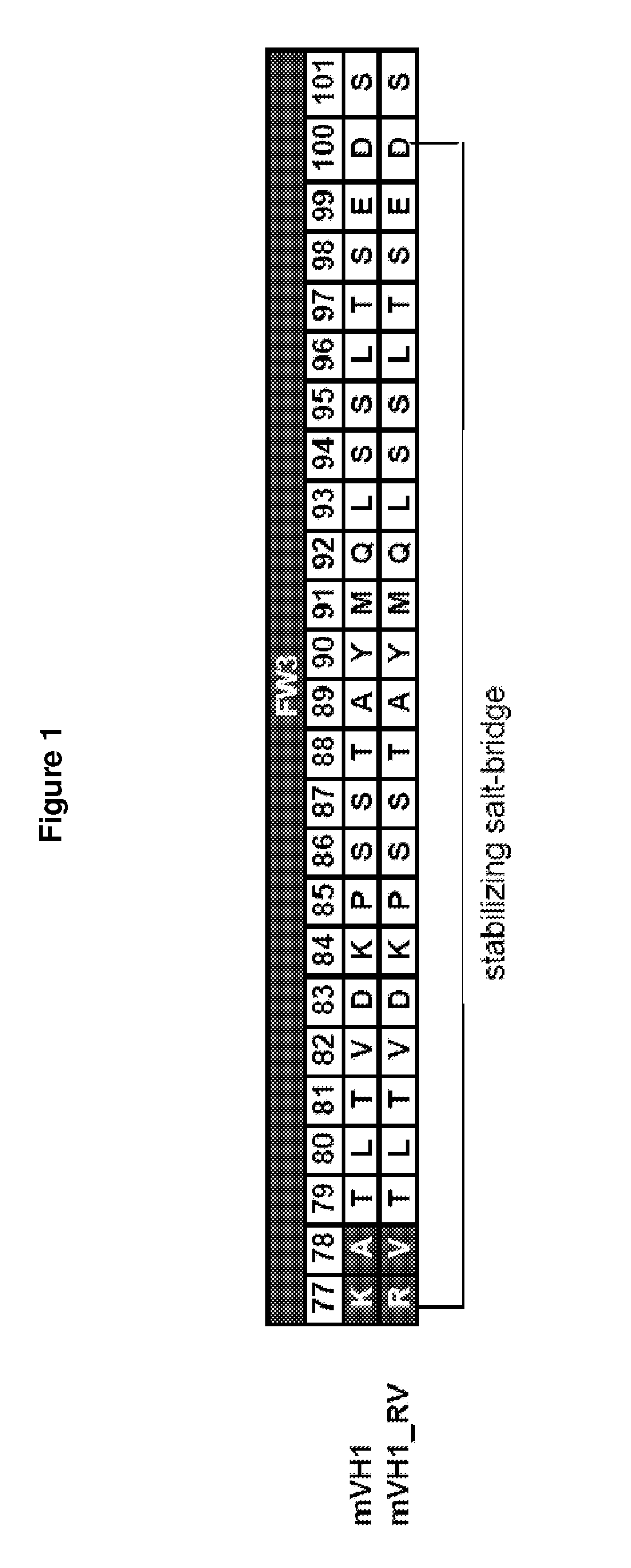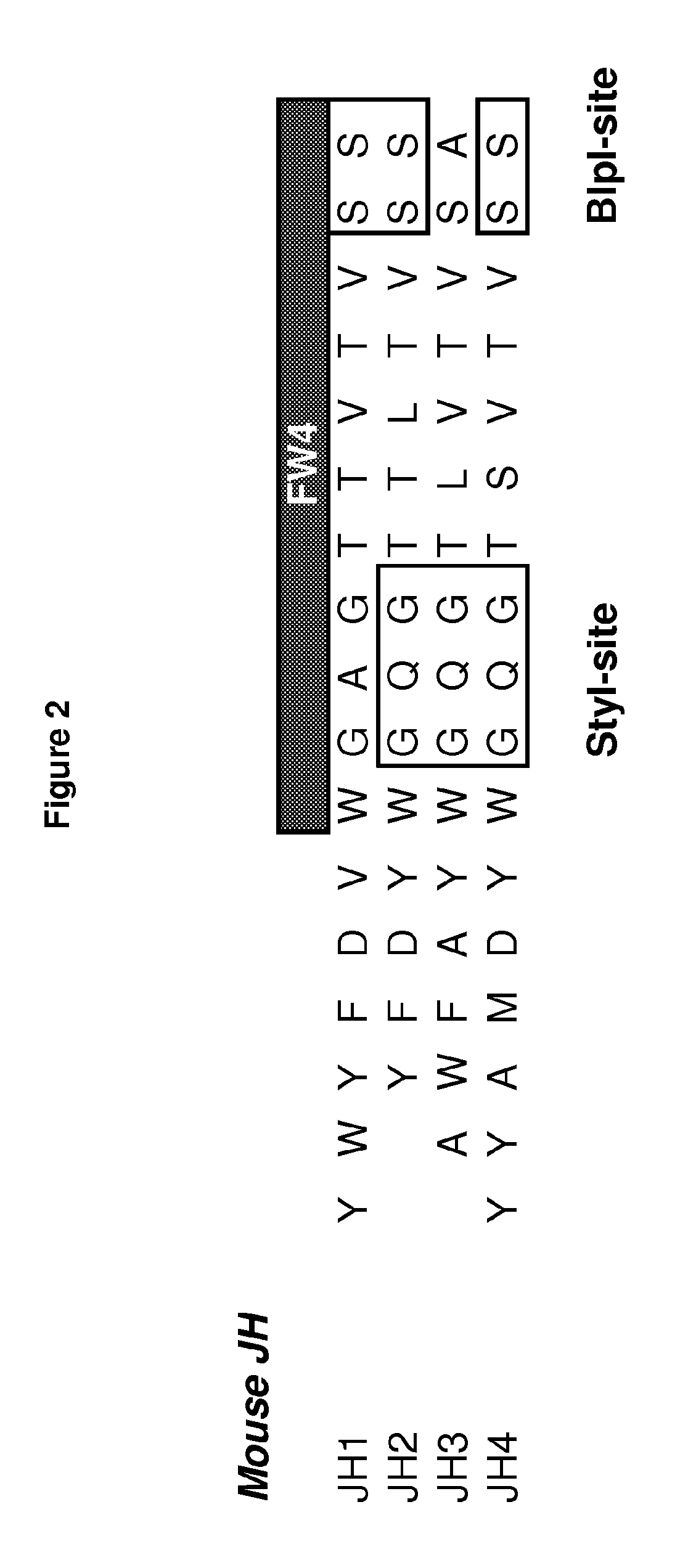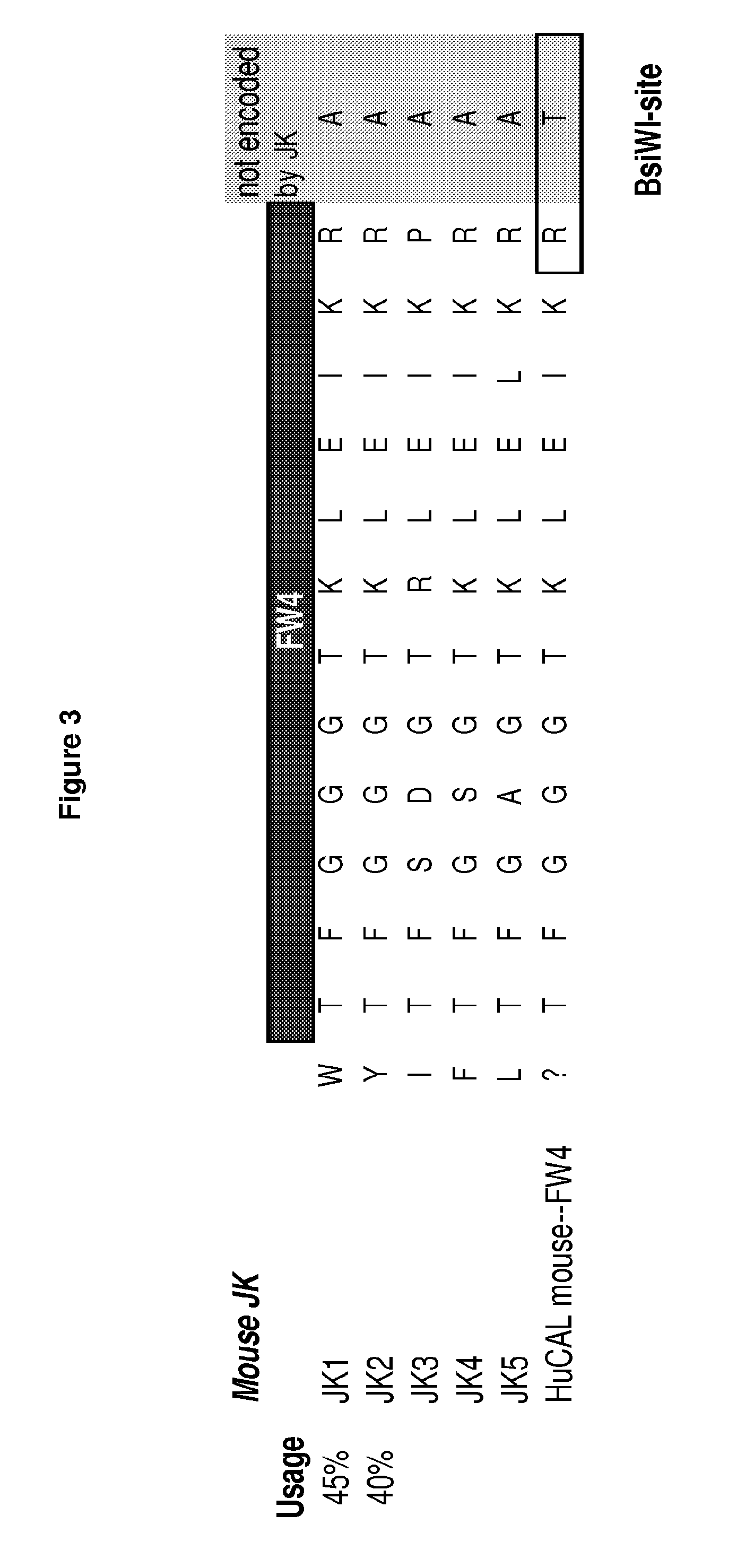Rodent Combinatorial Antibody Libraries
a technology of combinatorial antibodies and libraries, which is applied in the field of libraries, can solve the problems of not being able to achieve the same approach in rodent antibody libraries, the collection of libraries is fraught with problems, and the experimental animals usually suffer from rapid clearance, etc., and achieves the effects of favourable biophysical properties, higher expression levels, and higher stability
- Summary
- Abstract
- Description
- Claims
- Application Information
AI Technical Summary
Benefits of technology
Problems solved by technology
Method used
Image
Examples
example 1
Generation of a Murine Antibody Library (HuCAL Mouse)
example 1.1
Selection of VL- and VH-Germline Sequences for Generation of the Murine Master Genes
[0154]Public available data were analyzed for usage of murine VH germline families (see Kaushik et al., Res. Immunol. (1996) 147, 9-26). The following table summarizes the occurrence of the different VH germlines:
TABLE 1% in Name% in % in Kabat DB(KaushikKaushik et al. Kaushik et al.VH(var. strains)et al. (1996))(BALB / c)(var. strains)VH133J5583045VH224Q521410VH32430-60817VH51671831111VH910VGAM910SUM877293
[0155]Our aim was to generate a library that comprises as many germline families as possible. A library containing one member of each of the listed germline-families as mastergene would include more than 85% of the mouse VH repertoire, and exactly this was the goal of our task.
[0156]Germline-families often comprise more than one germline gene. For the listed families the number of germline gene ranges from 7 (VH2) to 134 (VH1)—the exact number depends on the mouse strain. Since most animal studies fo...
example 1.2
Selection of Master Genes
[0159]Two approaches were taken for the selection of the most frequently used germline genes, which are to be used as master genes:
[0160]a) Identification of the most prominent germline gene within the respective germline families
[0161]b) Identification of the germline gene, which is most akin to the consensus of all germline-genes within one family.
[0162]Ideally, both approaches would result in the same germline-gene.
PUM
| Property | Measurement | Unit |
|---|---|---|
| Tm | aaaaa | aaaaa |
| Tm | aaaaa | aaaaa |
| Tm | aaaaa | aaaaa |
Abstract
Description
Claims
Application Information
 Login to View More
Login to View More - R&D
- Intellectual Property
- Life Sciences
- Materials
- Tech Scout
- Unparalleled Data Quality
- Higher Quality Content
- 60% Fewer Hallucinations
Browse by: Latest US Patents, China's latest patents, Technical Efficacy Thesaurus, Application Domain, Technology Topic, Popular Technical Reports.
© 2025 PatSnap. All rights reserved.Legal|Privacy policy|Modern Slavery Act Transparency Statement|Sitemap|About US| Contact US: help@patsnap.com



